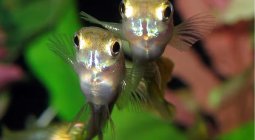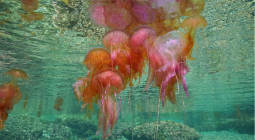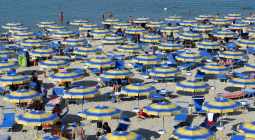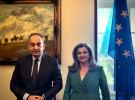‘Like doomsday’: why have salmon deserted Norway’s rivers – and will they ever return?
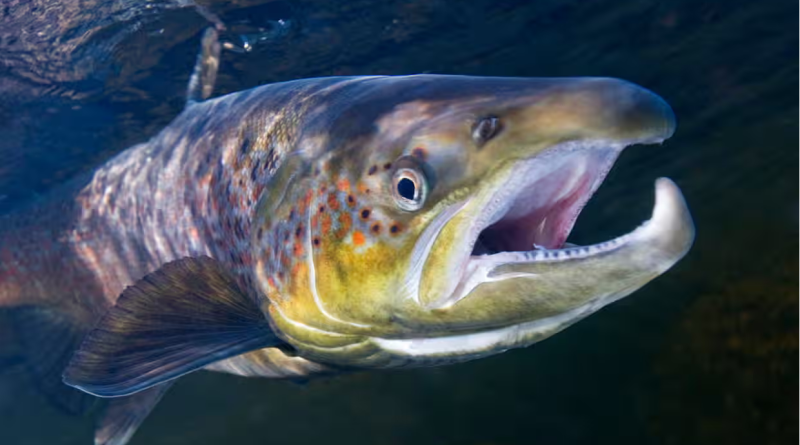
A male Atlantic salmon (Salmo salar) in the Okla River. This spring salmon, particularly medium and larger-sized fish did not return to many of Norway’s rivers. Photograph: Wild Wonders of Europe/Lundgren/naturepl.com
“What is Norway without the fjords and the mountains?” asks Ann-Britt Bogen from her candlelit kitchen, the wild Gaula River flowing by outside the window, the hillside covered by low-lying cloud. For centuries, the river, which runs 153km (95 miles) from the mountains near the Swedish border to Trondheim fjord, has attracted salmon – and fishers – year after year.
But this spring the salmon, particularly the medium and larger-sized fish, did not come back from the ocean, raising such alarm over the collapse of the salmon population that the river, along with dozens of others in central and southern Norway, was abruptly closed for the first time.
Visitors cancelled their plans and stayed away, leaving the area, which revolves around salmon fishing, feeling “like doomsday”, according to Bogen, who runs Gaula Fly-fishing Friends and has a fishing lodge on her family farm. The river will now be closed until 31 August when the season ends. “Without the salmon, Gauldalen is just a valley – an empty valley.”
Scientists have been warning of the rapidly declining North Atlantic salmon population for years, which in Norway has shrunk from more than a million in the early 1980s to about 500,000, a drop largely linked to the climate crisis. Now, the latest figures show Atlantic salmon stocks are at a historic low. Experts say the species is at imminent threat from salmon farming, which has led to escapes (including of sick fish), a dramatic rise in sea lice, and could result in wild salmon being replaced entirely by a hybrid species.
Torbjørn Forseth, a salmon researcher at the Norwegian Institute for Nature Research (Nina) and the head of the Norwegian scientific advisory committee for Atlantic salmon management, says wild Norwegian salmon could become extinct.
“We are replacing wild salmon with escaped farm salmon,” he says. “That’s in the long term a major threat because then you lose all these local adaptations.”
Each of Norway’s 450 salmon rivers has its own salmon which have adapted to the specific conditions of the local environment. “If that is replaced with a hybrid between wild and farmed salmon then you are losing something very, very important.”
While the broader factors linked to the climate crisis are not something that Norway can quickly do something about, the human-made impact of fish farming is something that could be swiftly acted upon, says Forseth. He is calling for a completely different approach to fish-farm management, separating farmed and wild fish populations. Open-net farming at sea has, he believes, reached its “biological limit”.
This year’s salmon collapse – from the south-east of Norway near the border with Sweden to just north of Trondheim – is unlike anything he has ever seen in his 25 years of studying Atlantic salmon. “I’m worried for the future,” he says.
Salmon in Norway dates back thousands of years, but the sport of fly-fishing as it is known today was introduced by the English in the 1820s. The sudden closure of 33 rivers, including the Gaula, just three weeks into the salmon fishing season in June was a shock to many. But Bogen says she’s not surprised.
“Something happened in 2023, but the decline has been obvious for years and years and all the research is showing all the same trends,” she says. “It’s such a decline and its happening very fast.”
It is, she believes, a political issue that requires changes to rules on fish farming and a change of attitude from anglers, who in Norway do not have the same tradition of catch and release as they do in Scotland and Ireland. “It’s quite a different mentality and it takes years and years to change that. But if you don’t start it will never happen.”
Henrik Wiedswang Horjen, a spokesperson for Sjømat Norge (the Norwegian Seafood Federation), which represents about 700 companies including fish farms, says the issues affecting wild salmon are complex and that closed farm units are “much more energy-intensive”.
“We have always signalled that we will take the industry’s part of the impact seriously and continue targeted work,” he says. “Farming in closed units is much more energy-intensive than in open nets. A conversion will entail a significant increase in energy production, which will have a significant environmental impact.”
But Vegard Heggem, the former Liverpool player turned salmon campaigner for Norske Lakseelver (Norwegian Salmon Rivers), says salmon farming needs to switch to closed containment and he wants to see a government-imposed deadline on doing so as Canada has done in British Columbia.
Consumers also need to be better informed about how their salmon is farmed, he says. “For Norway it [the salmon] is like a symbol species for the country. It’s our panda. It’s just not acceptable as a nation to allow the wild salmon to be turned into a museum item – it’s there but you can’t enjoy it, you can’t touch it, can’t fish it.”
Norway’s state secretary, Even Tronstad Sagebakken, says that the environmental impact from aquaculture is thoroughly regulated but added: “The licensing and operating system we have today does not fully solve the challenges we have … With this in mind, the government is now working on a new white paper on aquaculture, which we aim to present next spring. [It] will seek to find solutions that make environmentally friendly operations more profitable and a main goal for everyone.”
It may sound counterintuitive, but at Hembre Gård, a fishing lodge on the Stjørdal River, which reopened in July after being closed a month earlier, Aksel and Beate Hembre say continued fishing on the rivers is crucial to maintain interest in the health of Norwegian wild salmon.
Aksel, whose family has owned the farm for 500 years, believes catch and release is a vital part of the solution. “It’s the main tool we can use to keep our rivers open. If you close the river the interest from the landowners and fishing goes away and then no one cares about the salmon any more.”


